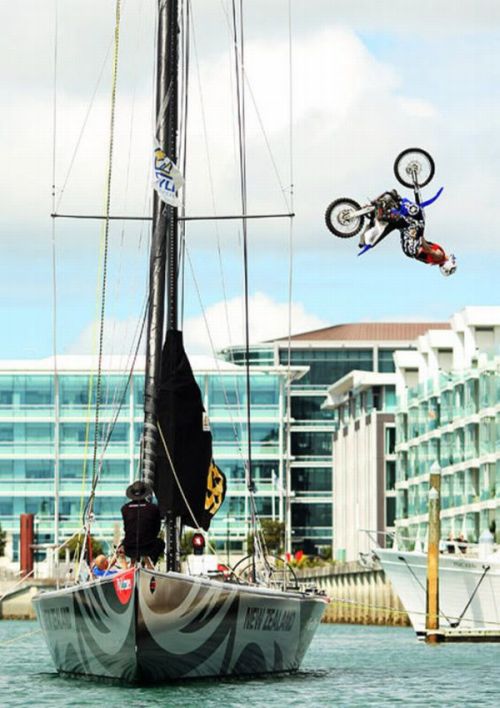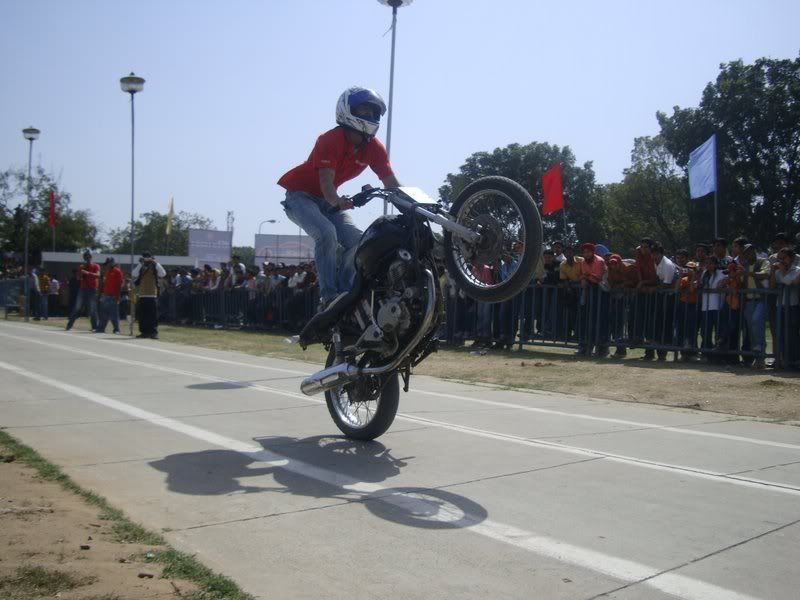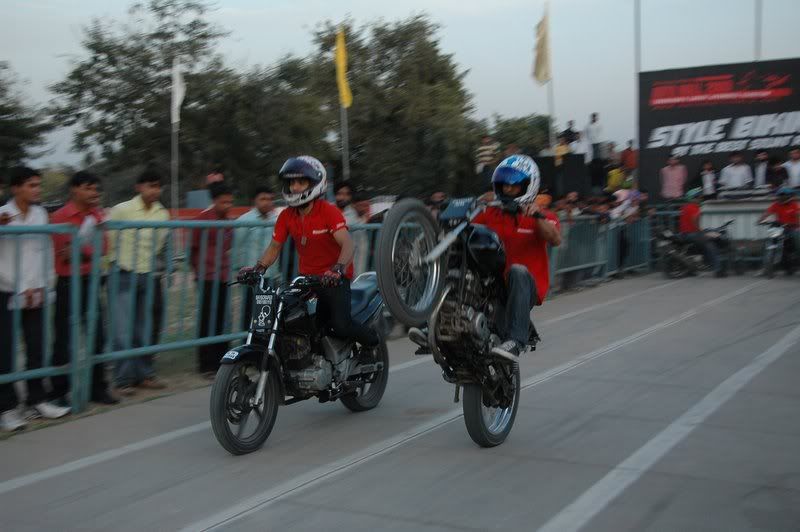World's Fastest Cars:
1. Bugatti Veyron Super Sport: 267 mph (429 km/h), 0-60 in 2.4 secs. Aluminum, Narrow Angle 8 Liter W16 Engine with 1200 hp, base price is $2,400,000. Although the Bugatti Veyron lost the title to SSC Ultimate Aero on March 2007, Bugatti challenged the record in Germany on July 10, 2010 with the new Super Sport and the Bugatti Veyron reclaimed the title of the fastest car in the world at 267 mph. The original Bugatti Veyron had a top speed of 253 mph, priced at $1,700,000 with 1001 hp.

#2 is a tie at 260 mph!
2. Hennessey Venom GT: 260 mph (418 km/h), 0-60 mph in 2.5 seconds, has a 6.2-liter LS9 Turbocharged V8 Twin Turbo V8 Engine producing 1200 hp, with a price tag of $950,000. The Venom GT has yet to be tested and proven, but could possibly hit a top speed of 275 mph. This might just be the Veyron Super Sport's closest challenger!

2. Koenigsegg Agera R: 260 mph (418 km/h), 0-60 mph in 2.9 secs. 5.0-liter V8 Engine with twin turbo’s, housing 1099 hp. Base price is $1,600,000. If you're into snow sports, the Agera R can be fitted with a Ski Box as well as winter tires. While the Agera R has a massive theoretical top speed, the current tested top speed is 260 mph. Expect this snow car to be the Bugatti's arch enemy for the next 5 years.
Also a tie for #3.
3. SSC Ultimate Aero: 257 mph (413 km/h), 0-60 in 2.7 secs. Twin-Turbo V8 Engine with 1183 hp, base price is $654,400. Tested in March 2007 by Guinness World Records, The SSC Ultimate Aero was the fastest car in the world from March 2007 to July 2010. On March 2011, the Koenigsegg Agera R also surpassed it, forcing this American made car to the #3 spot. Shelby SuperCars will continue their quest to reclaim the fastest car title, and their new SSC Tuatura might do the job (we'll just have to wait).

3. 9ff GT9-R: 257 mph (413 km/h), 0-60 in 2.9 secs. The 4.0 Liter flat-6 Twin-Turbo Engine with 1120 hp, comes with a base price is $695,000. Based on the Porsche 911, the 9ff GT9-R 1120 hp version is limited to 20 units and the exterior may be modified to suit the owner.

4. Saleen S7 Twin-Turbo: 248 mph (399 km/h), 0-60 in 2.8 secs. Twin Turbo All Aluminum V8 Engine with 750 hp, base price is $555,000. Smooth and bad-ass. It will make you want to show it off non-stop.

5. Koenigsegg CCX: 245 mph (394 km/h), 0-60 in 3.2 secs. 90 Degree V8 Engine 806 hp, base price is $545,568. Made in Sweden, it is the older brother of the Agera R, only losing to 4 other supercars in the world.

6. McLaren F1: 240 mph (386 km/h), 0-60 in 3.2 secs. BMW S70/2 60 Degree V12 Engine with 627 hp, base price is $970,000. The fastest car in the 20th century with doors that looks like bat wings. Maybe Batman needs to order one and paint it black
7. Zenvo ST1: 233 mph (374 km/h), 0-60 in 2.9 secs. Twin-Charged 7.0 liter V8 Engine forging 1,104 hp. Base price: $1,225,000. The first Supercar from Zenvo Automotive, a Danish sports car company in pursuit of speed and perfection. This 100% Danish made supercar is limited to 15 units and the company even promised "flying doctors" to keep your baby functioning.

There is a tie for 8th place at 225 mph.
8. Gumpert Apollo: 225 mph (362 km/h), 0-60 in 3.0 secs, 4.2 liter V8 Engine that houses 650 hp. Base price: $450,000. Gumpert claims that the Apollo was designed such that it could drive upside-down in a tunnel with speeds at 190 mph or above. Of course, no one has tested this yet.
8. Noble M600: 225 mph (362 km/h), 0-60 in 3.7 secs. Twin-turbocharged 4.4-liter V8 Engine with 650 hp. Base price is $330,000. The Noble M600 also happens to be a very cool car. Its inconspicuous design sports a slender and contoured body which does not scream out for attention at every second of the day.
There is a 3-way tie for #9!
9. Aston Martin One-77: 220 mph (354 km/h), 0-60 in 3.4 secs. 7.3 litre V12 Engine with 750 hp. Base price: $1,850,000. The production of this is limited to 77, hence the name One-77. This is beauty and power packed into One.

9. Ascari A10: 220 mph (354 km/h), 0-60 in 2.8 secs. 5.0 litre BMW V8 S62 Engine with 625 hp. Base price: $650,000. The company planned to produce 50 of these supercars at its factory in Banbury, England.
9. Lamborghini Aventador: 220 mph (354 km/h), 0-60 in 2.9 secs. V12 Engine with 700 hp, base price is $379,700. According to Lamborghini, Aventador is the name of a Bull that entered into battle at the Saragossa Arena on October 1993. This is the fastest bull in the world!

We have another 3-way a tie for 10th place:
10. Pagani Zonda Cinque Roadster: 217 mph (349 km/h), 0-60 in 3.4 secs. Twin turbocharged AMG V12 engine that produces 678 hp. Base price is $1,850,000. The Pagani Zonda Cinque Roadster is a limited-edition, with five ever produced. It is the quintessential exotic and exclusive supercar.
10. Ferrari Enzo: 217 mph (349 km/h), 0-60 in 3.4 secs. F140 Aluminum V12 Engine with 660 hp, base price is $670,000. Only 399 were ever produced; the price goes up every time someone crashes.
10. Jaguar XJ220: 217 mph (349 km/h), 0-60 in 3.8 secs. Twin Turbo V6 Engine with 542 hp, base price was $650,000. Made in 1992, this car still has what it takes to make the list.


#2 is a tie at 260 mph!
2. Hennessey Venom GT: 260 mph (418 km/h), 0-60 mph in 2.5 seconds, has a 6.2-liter LS9 Turbocharged V8 Twin Turbo V8 Engine producing 1200 hp, with a price tag of $950,000. The Venom GT has yet to be tested and proven, but could possibly hit a top speed of 275 mph. This might just be the Veyron Super Sport's closest challenger!

2. Koenigsegg Agera R: 260 mph (418 km/h), 0-60 mph in 2.9 secs. 5.0-liter V8 Engine with twin turbo’s, housing 1099 hp. Base price is $1,600,000. If you're into snow sports, the Agera R can be fitted with a Ski Box as well as winter tires. While the Agera R has a massive theoretical top speed, the current tested top speed is 260 mph. Expect this snow car to be the Bugatti's arch enemy for the next 5 years.

Also a tie for #3.
3. SSC Ultimate Aero: 257 mph (413 km/h), 0-60 in 2.7 secs. Twin-Turbo V8 Engine with 1183 hp, base price is $654,400. Tested in March 2007 by Guinness World Records, The SSC Ultimate Aero was the fastest car in the world from March 2007 to July 2010. On March 2011, the Koenigsegg Agera R also surpassed it, forcing this American made car to the #3 spot. Shelby SuperCars will continue their quest to reclaim the fastest car title, and their new SSC Tuatura might do the job (we'll just have to wait).

3. 9ff GT9-R: 257 mph (413 km/h), 0-60 in 2.9 secs. The 4.0 Liter flat-6 Twin-Turbo Engine with 1120 hp, comes with a base price is $695,000. Based on the Porsche 911, the 9ff GT9-R 1120 hp version is limited to 20 units and the exterior may be modified to suit the owner.

4. Saleen S7 Twin-Turbo: 248 mph (399 km/h), 0-60 in 2.8 secs. Twin Turbo All Aluminum V8 Engine with 750 hp, base price is $555,000. Smooth and bad-ass. It will make you want to show it off non-stop.

5. Koenigsegg CCX: 245 mph (394 km/h), 0-60 in 3.2 secs. 90 Degree V8 Engine 806 hp, base price is $545,568. Made in Sweden, it is the older brother of the Agera R, only losing to 4 other supercars in the world.

6. McLaren F1: 240 mph (386 km/h), 0-60 in 3.2 secs. BMW S70/2 60 Degree V12 Engine with 627 hp, base price is $970,000. The fastest car in the 20th century with doors that looks like bat wings. Maybe Batman needs to order one and paint it black

7. Zenvo ST1: 233 mph (374 km/h), 0-60 in 2.9 secs. Twin-Charged 7.0 liter V8 Engine forging 1,104 hp. Base price: $1,225,000. The first Supercar from Zenvo Automotive, a Danish sports car company in pursuit of speed and perfection. This 100% Danish made supercar is limited to 15 units and the company even promised "flying doctors" to keep your baby functioning.

There is a tie for 8th place at 225 mph.
8. Gumpert Apollo: 225 mph (362 km/h), 0-60 in 3.0 secs, 4.2 liter V8 Engine that houses 650 hp. Base price: $450,000. Gumpert claims that the Apollo was designed such that it could drive upside-down in a tunnel with speeds at 190 mph or above. Of course, no one has tested this yet.

8. Noble M600: 225 mph (362 km/h), 0-60 in 3.7 secs. Twin-turbocharged 4.4-liter V8 Engine with 650 hp. Base price is $330,000. The Noble M600 also happens to be a very cool car. Its inconspicuous design sports a slender and contoured body which does not scream out for attention at every second of the day.

There is a 3-way tie for #9!
9. Aston Martin One-77: 220 mph (354 km/h), 0-60 in 3.4 secs. 7.3 litre V12 Engine with 750 hp. Base price: $1,850,000. The production of this is limited to 77, hence the name One-77. This is beauty and power packed into One.

9. Ascari A10: 220 mph (354 km/h), 0-60 in 2.8 secs. 5.0 litre BMW V8 S62 Engine with 625 hp. Base price: $650,000. The company planned to produce 50 of these supercars at its factory in Banbury, England.

9. Lamborghini Aventador: 220 mph (354 km/h), 0-60 in 2.9 secs. V12 Engine with 700 hp, base price is $379,700. According to Lamborghini, Aventador is the name of a Bull that entered into battle at the Saragossa Arena on October 1993. This is the fastest bull in the world!

We have another 3-way a tie for 10th place:
10. Pagani Zonda Cinque Roadster: 217 mph (349 km/h), 0-60 in 3.4 secs. Twin turbocharged AMG V12 engine that produces 678 hp. Base price is $1,850,000. The Pagani Zonda Cinque Roadster is a limited-edition, with five ever produced. It is the quintessential exotic and exclusive supercar.

10. Ferrari Enzo: 217 mph (349 km/h), 0-60 in 3.4 secs. F140 Aluminum V12 Engine with 660 hp, base price is $670,000. Only 399 were ever produced; the price goes up every time someone crashes.

10. Jaguar XJ220: 217 mph (349 km/h), 0-60 in 3.8 secs. Twin Turbo V6 Engine with 542 hp, base price was $650,000. Made in 1992, this car still has what it takes to make the list.


























 1. Lincoln is enshrined in the Wrestling Hall of Fame.
1. Lincoln is enshrined in the Wrestling Hall of Fame.
